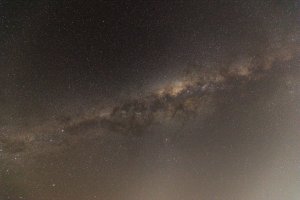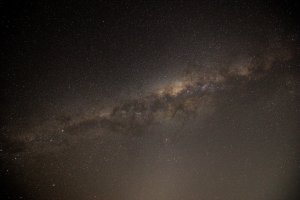They're already lower than most.Except for those of us who own the 800 and just pre-ordered the 200-800.
Used 800 prices will crater.
Upvote
0
They're already lower than most.Except for those of us who own the 800 and just pre-ordered the 200-800.
Used 800 prices will crater.
good point didn't think of it that wayImportant thing to keep in mind is that optically correcting the corners of wide/ultrawide lenses (i.e. with the design of the glass in the lens) still stretches the corners and reduces resolution. From my testing, correcting the distortion digitally yields similar results in terms of resolution, but results in a smaller, lighter, and cheaper lens.
IMO it is a statement they care about all customers, starting with Aps-c vloggers up to high professionals.There seems to be no pattern to it and it is the same day that the RF 10-20 f/4 IS L was released.
I've said it before: 70-200 f/2I'll hazard a guess that one of the next lenses coming from Canon will be a RF 70-200mm F/2.8L Z lens, of some sort.
Maybe 70-240mm F/2.8L Z? Or 50-200mm F/2.8L Z? Looking at the size and shape of the RF 24-105mm F/2.8L Z, I almost wonder if they could copy the external body over to an internal zoom 70-200mm with the same servo attachment compatibility.
It's a niche of a niche and I don't have any files to hand but when I used to do deep sky astro work, which involves pushing files to extremes, I usually had to discard the outer portion of the frame in part because of noise in the corners caused by vignetting. And that was after stacking etc. I wouldn't expect them to produce lenses for that purpose though, and my feeling is cropping is usually a good workaround - particularly starting with a very wide angle lens.Thanks for hearing me out.
To be clear I don't necessarily mean that exact lens. I'd love to see an example of what you're talking about here, whichever lens it may be. It may not be possible but a full comparison would include:
1) center-exposed, software-corrected image with noise in the corners. Even that by itself would be very instructive.
2) corner-exposed, software-corrected image that shows blown-out highlights in the center. Again, even by itself would be very instructive, and show that simply exposing for the corner isn't an adequate solution.
3) image (1) or (2) but without software correction, as it'd be interesting to see if the corrected version is ever actually worse than uncorrected,
4) any alternative lens not depending heavily on software correction of vignetting (or distortion). Ideally they'd be same subject same time, but I understand that's practically impossible to have access to. (I do usually try to shoot some comparisons, though, when I'm upgrading to the latest generation, e.g. EF135 to RF135.)
AgreedRight now the biggest gap for RF seems to be fast wide primes, so I feel like those will be due next year.
Would love it sooner rather than later...RF 35mm F/1.2, no doubt this is finally happening next year.
Not on the market for any of these, but all interesting lensesRF 200-500 F/4L, no doubt since there's been plenty of chatter about that.
RF 70-200mm F/2.8L Z, or something along those lines, could also be good to announce with the R1. It does also beg the question of how far will the Z lenses go? is there a RF 14-24mm F/2.8 Z coming? A RF 100-400 F/5.6 Z lens?
Would be very interested in new TS, especially if with AF. MP-E could be interesting if they do something even more extreme than the existing one.RF AF tilt shifts, probably, though not sure they would go with the R1, they feel like more of an EOS R5 Mark II sorta announcement.
MP-E replacement? I know it's super niche, but a super macro doesn't exist for the RF mount yet other than the 1.4x macro of the 100mm.
I’m missing an equivalent for the 180L macro as well. The MP-E is hard to improve on in it current form, but the 180L has lots of low hanging fruit.With all these announcements recently, it's kinda crazy to think there isn't a ton of stuff from the EF left to make native on the RF mount.
Right now the biggest gap for RF seems to be fast wide primes, so I feel like those will be due next year.
RF 35mm F/1.2, no doubt this is finally happening next year.
RF 200-500 F/4L, no doubt since there's been plenty of chatter about that.
RF 70-200mm F/2.8L Z, or something along those lines, could also be good to announce with the R1. It does also beg the question of how far will the Z lenses go? is there a RF 14-24mm F/2.8 Z coming? A RF 100-400 F/5.6 Z lens?
RF AF tilt shifts, probably, though not sure they would go with the R1, they feel like more of an EOS R5 Mark II sorta announcement.
MP-E replacement? I know it's super niche, but a super macro doesn't exist for the RF mount yet other than the 1.4x macro of the 100mm.
What the 24-240 and 16/2.8 and 14-35 do is this: the optics produce an image that is barrel-distorted. Barrel distortion doesn't really affect the focal length. On a vertical bisector the field-of-view is the same as for a perfect rectilinear lens, and going on a diagonal the field-of-view is wider.AFAIK, there are 2 ways modern lenses / cameras deal with vignetting:
- traditionally the camera / software would brighten the corners to offset / mitigate vignetting. This could result in higher noise in the corners, and it would be more or less visible depending on exposure
- more recently, some lenses are made to be actually wider than declared fl, but with extremely dark corners. The camera / software crops / stretches the image eliminating the dark corners and increasing the fl to the declared fl of the lens. This will not affect noise but it will potentially reduce resolution in the corners due to stretching. Again, this may be very visible or very little. This approach is used with the RF 24-240 and 10-20 lenses, and possibly other wide zooms.
This came up recently, so I’ll just quote myself:To me, the lack of corner illumination is the biggest compromise when it comes to these types of lenses, rather than the distortion correction.
"Fast" and "bright" have always been synonymous in describing lenses. Lenses with wider apertures transmit more light to the image plane (bright), thereby allowing shorter exposures (fast).When did "fast lens" become "bright lens"?
I have the 800 f11 and I don’t particularly like except for being light and easy to carry. The 200-800 is a lot heavier for just half a stop faster. When I first saw the new lens I was certain I was going to sell the f11 and get this but I already changed my mind. I also don’t like the non removable tripod leg which will take plenty of valuable space in my bagExcept for those of us who own the 800 and just pre-ordered the 200-800.
Used 800 prices will crater.
Here's a recent milky way shot - EF 16-35 f4. Sorry I couldn't upload the full sized one (8192x5464) as the forum couldn't digest it.To be clear I don't necessarily mean that exact lens. I'd love to see an example of what you're talking about here, whichever lens it may be. It may not be possible but a full comparison would include:
1) center-exposed, software-corrected image with noise in the corners. Even that by itself would be very instructive.

It's not an adequate solution because it's generally meaningless and not practical. In makes no sense in astro and it makes no sense when doing ETTR.2) corner-exposed, software-corrected image that shows blown-out highlights in the center. Again, even by itself would be very instructive, and show that simply exposing for the corner isn't an adequate solution.
The same image without vignette correction.3) image (1) or (2) but without software correction, as it'd be interesting to see if the corrected version is ever actually worse than uncorrected,

Thanks for the example. The debate/argument here is about the complaints from some people that the RF lenses designed to require digital correction of the distortion are ‘horrible’ or ‘unacceptable’. That your example of this terrible, no good, very bad digital corner mangling comes from an EF lens effectively pours cold water on their (il)logic.Here's a recent milky way shot - EF 16-35 f4.
The images are still usable after corrections, but note it's 16mm, and the lens in question is 24mm at its wide end. So we may expect less vignetting, probably. But the fear is it can be worse - we just need to wait for the proper tests/measurements on that lens.Thanks for the example. The debate/argument here is about the complaints from some people that the RF lenses designed to require digital correction of the distortion are ‘horrible’ or ‘unacceptable’. That your example of this terrible, no good, very bad digital corner mangling comes from an EF lens effectively pours cold water on their (il)logic.
Though I am not the target audience, I do feel the 24-105 2.8 is too expensive considering that to use the power zoom it looks like you need to attach an extra $1000 accessory. That brings the lens' full functionality price to $4k (or $4.3k for remote shooting).
Considering Canon was selling the PZ E1 for $150 in 2016 for the 18-135 lens, charging $1000 for the same thing now is a bit ridiculous, especially when competing brands add a powerzoom rocker on the lens itself.
